House in Kawanishi by Tato Architects with hipped roof and stilts
This house in Hyogo, Japan, was designed by Tato Architects with the same hipped roof, stilted structure and wide balcony that are common to residences in Queensland, Australia (+ slideshow).
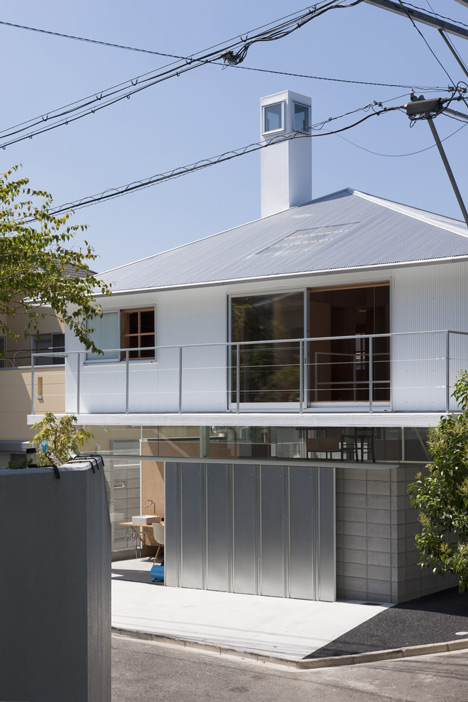
Yo Shimada of Tato Architects loosely based the two-storey House in Kawanishi on the archetypal Australian dwelling known as "The Queenslander", which has been interested in ever since coming across photographs of the buildings in construction.
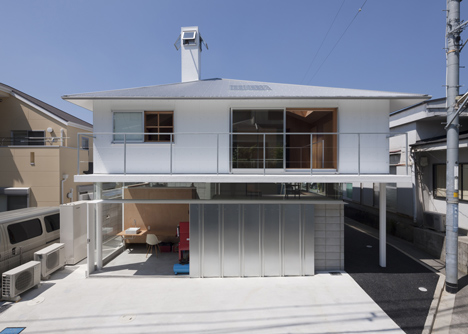
"Since then, I have been interested in the form of this style of house," said Shimada, explaining how he was later able to visit Australia and see the houses for himself. "It's a design solution that mirrored my own thinking," he added.
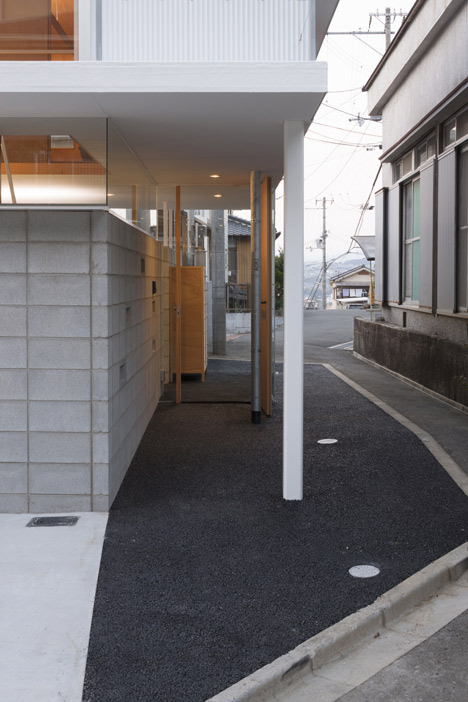
The stilted structure of the house, comprising a system of exposed steel I-beams, allowed Shimada to recess part of the ground floor to allow ample room for a public walkway that runs alongside the property.
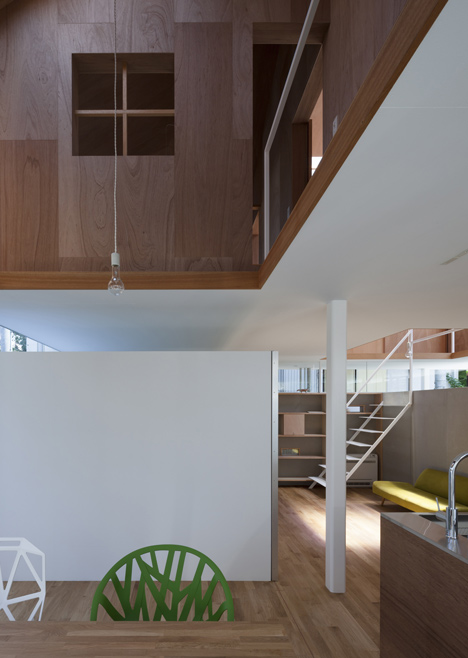
The first floor still continues to the edge of the site, sheltering part of the walkway but also framing the house's entrance lobby - a transparent glass box containing a cabinet for storing shoes before entering.
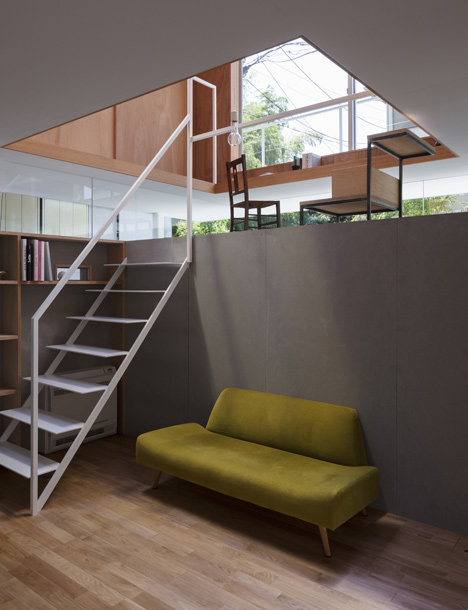
According to Shimada, this space is intended to highlight the boundary between the public space of the walkway and the privacy of the domestic interior. "It sits reminiscent of a bus stop containing furniture brought there by neighbours," he said.
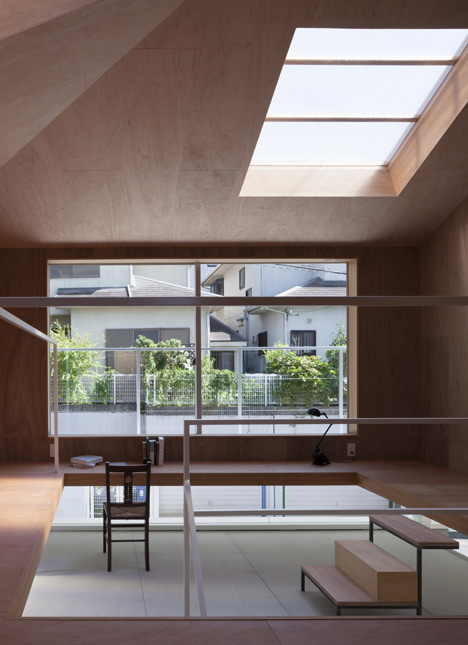
Square in plan, the house has a non-symmetrical grid that defines the sizes of rooms contained within. Living, dining and kitchen areas occupy a large open-plan space on the ground floor, but are loosely separated by a boxy white bathroom.
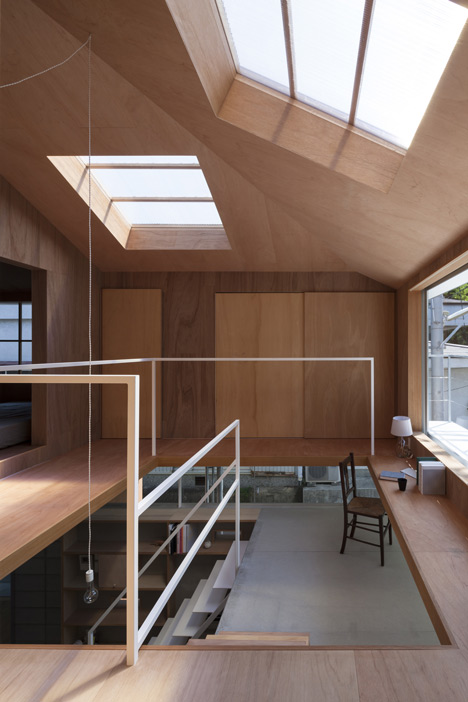
Two large voids in the ceiling allow views up to the floor above. One of these openings also functions as a stairwell and ascends up over a storage area at the front of house.
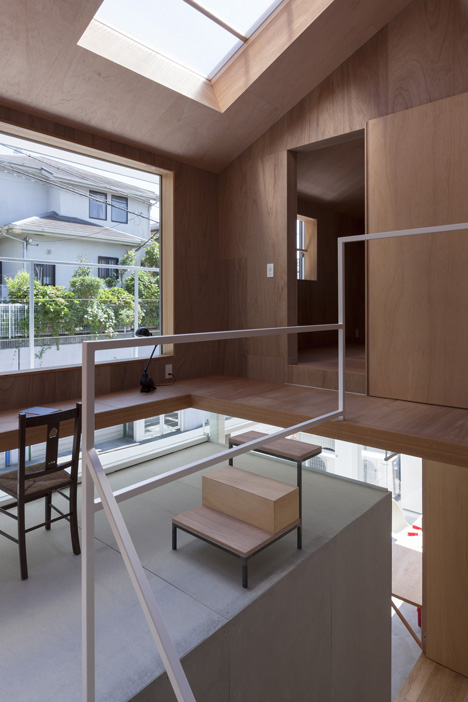
A landing halfway up the stairs creates a sunken seating area for a study above, allowing the floor surface to be used as a desk.
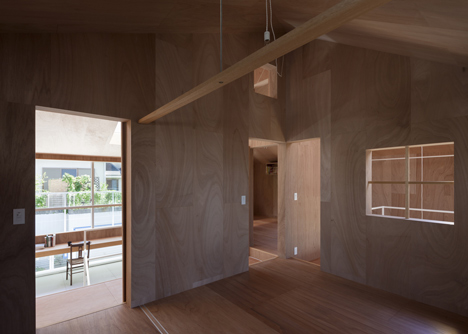
The entire first floor is lined with lauan plywood. Internal windows allow views between rooms on this level, while skylights bring extra daylight in through the sloping roof above.
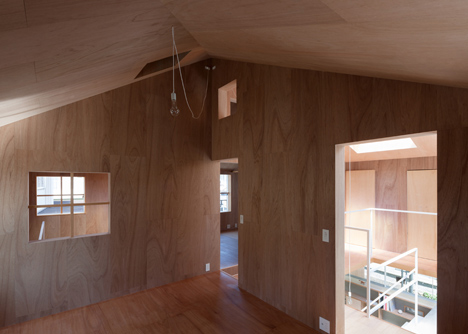
The house's balcony stretches across the entire south facade. A garage is positioned underneath and can be accessed by sliding back an industrial metal door.
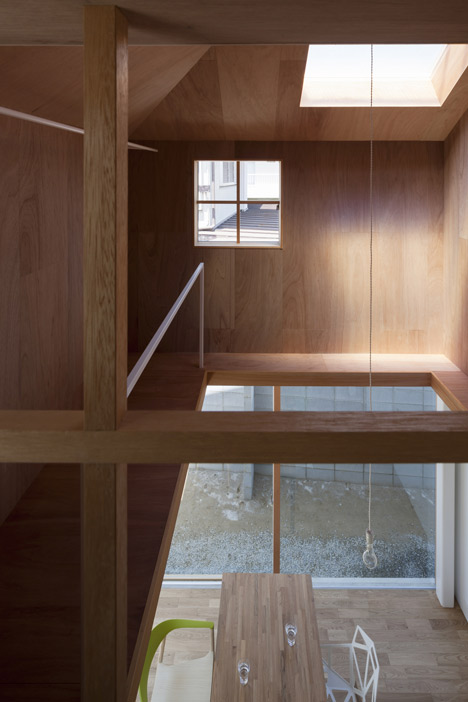
Concrete-block walls with occasional perforations enable a system of natural ventilation, with hot air released through a chimney at the rear.
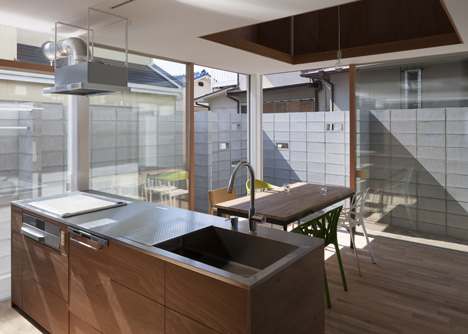
Photography is by Shinkenchiku-sha.
Here's a project description from Tato Architects:
House in Kawanishi
Layered Boundaries
The project presented an unusual challenge: A public walkway ran adjacent to the western boundary of the house. It narrowed awkwardly from a three metre-wide road on approach from the north to a mere seventy centimetres on the eastern border to the southern corner of the site. If walls had been built to the boundary of the site to protect the residents' privacy from the many passers-by who used this path, the path would narrow oppressively and become more difficult for the area's residents to use.
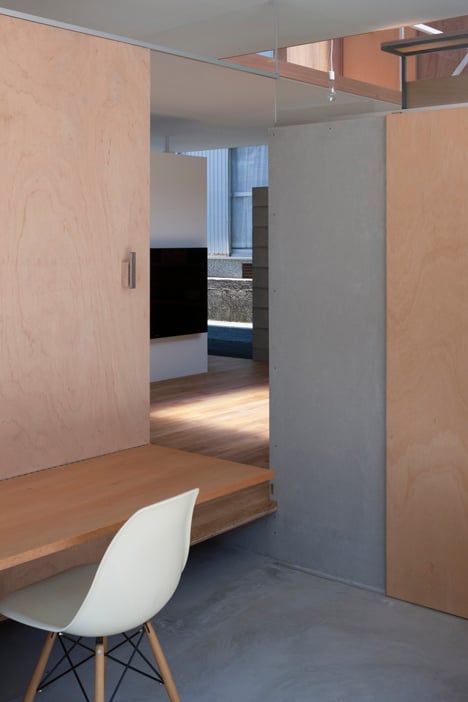
Instead, the ground floor was set back from the boundary to give space to the path and to give the impression that the full width of the path continued through. Then the second floor of the house was built back over the path, out to the boundary of the site and its border with the road. There is a glazed entrance area containing a shoe cabinet that appears to sit beyond the border between the public and private spaces. It sits reminiscent of a bus stop containing furniture brought there by neighbours.
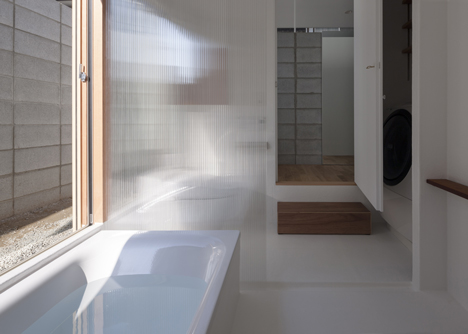
This theme of crossing borders between road and site is carried through the entire house design. Using the line of the neighbour's concrete block wall, a new block wall has been built through to the south, crossing an interior space to become the wall of a storage space. This harnesses the height differences originally found in the site.

The area above the storage space then forms a landing for the stairs, and the level of the first floor has been adjusted to function as a desk sitting over the landing. This creates a space that is partly a border between a floor and partly a desk. Seen from the street, the ground floor, the first floor, and the interior and the exterior all appear to cross over.
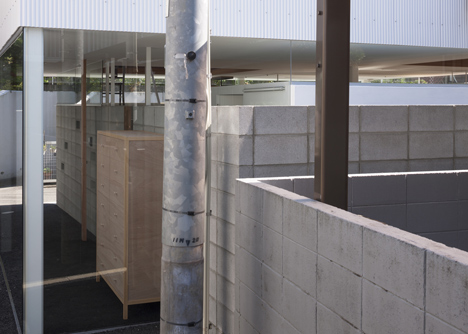
The interior walls of the upper volume are all lauan plywood, which creates a singular space that lives in clear contrast to the ground floor, which contains a variety of materials and features. The whole design suggests an evolving living space with features that appear to cross beyond boundaries yet control them at the same time.
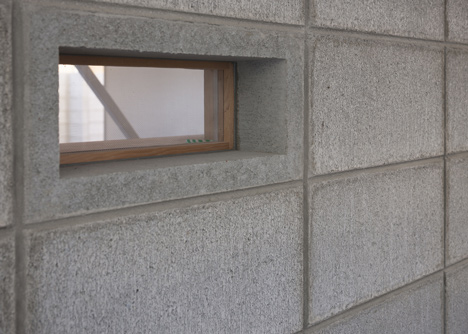
Gaining anonymous knowledge
The house style called a "Queenslander" is a stilt house with a wooden structure and a balcony design specific to Queensland in Australia. While some researchers in Japan have studied it, I had little knowledge of it until I encountered photographs of Queenslander houses being lifted during their conversion and renovation from one to two-story structures. Since then, I have been interested in the form of this style of house.
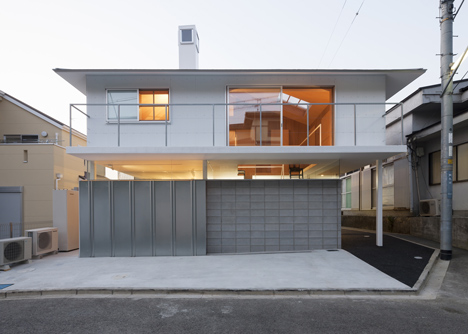
By a curious coincidence, last year I received a request from an Australian man to design his house. I flew there in June in 2013 for the site research, where I found the city space was surprising. Most of the Queenslanders I saw had hipped roofs with overhangs that covered all of the exterior space of the house. These roofs were clad in corrugated iron, painted white or silver to reflect the heat. To facilitate ventilation, which is normally difficult with a hipped roof, ventilators were installed on top. During their conversion to their two-storey form, various additional house features were being built in under the lifted volumes.
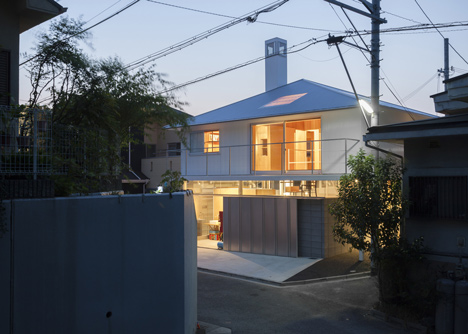
It's a design solution that mirrored my own thinking in the design of this house, which was under construction at that time. While I design my architecture, I am sometimes encouraged by the knowledge I gain from anonymous predecessors who have had to deal with similar matters beyond time and regions. It is a wonderful moment to be able to touch an unbroken line of history in architecture and accumulate knowledge from it.
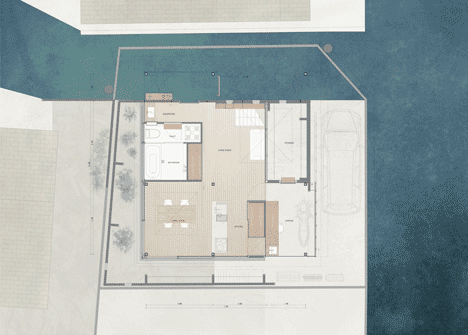
Structure
The plan is defined by a grid, with four squares slightly shifted off centre, and a modified square hipped roof formed by raising it at the centre. The simple, slim rigid joint frame structure consists of 125mm×125mm square steel columns and 200mm×100m H section steel beams. It realises its strength through its stiffness, by the low ceiling height and by the column bases buried in the foundation.
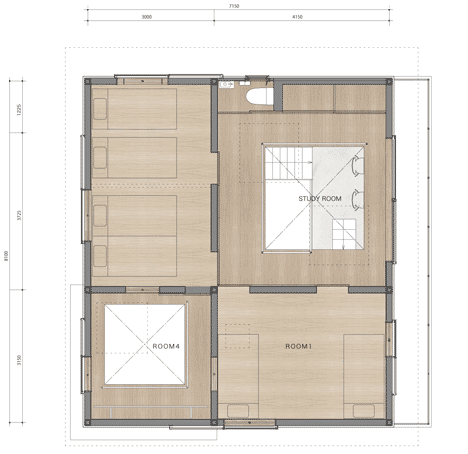
On the edge of the eaves, small section flat steel pipes are inserted to channel the steel rafters around the structure. The concrete block wall on the ground floor stands without counterforts through the support of flat steel bars inserted into some of the block holes.
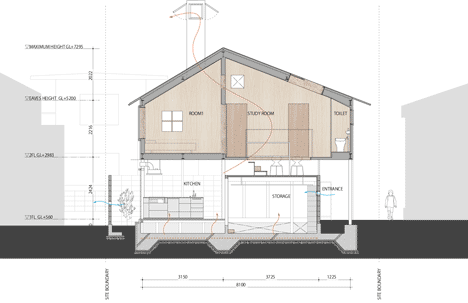
Location of site: Hyogo, Japan
Site area: 120.54 sqm
Building area: 59.84 sqm
Total floor area: 107.73 sqm
Type of Construction: steel
Program: house
Project by: Tato Architects
Principal designer: Yo Shimada
Structural engineer: S3 Associates Inc.